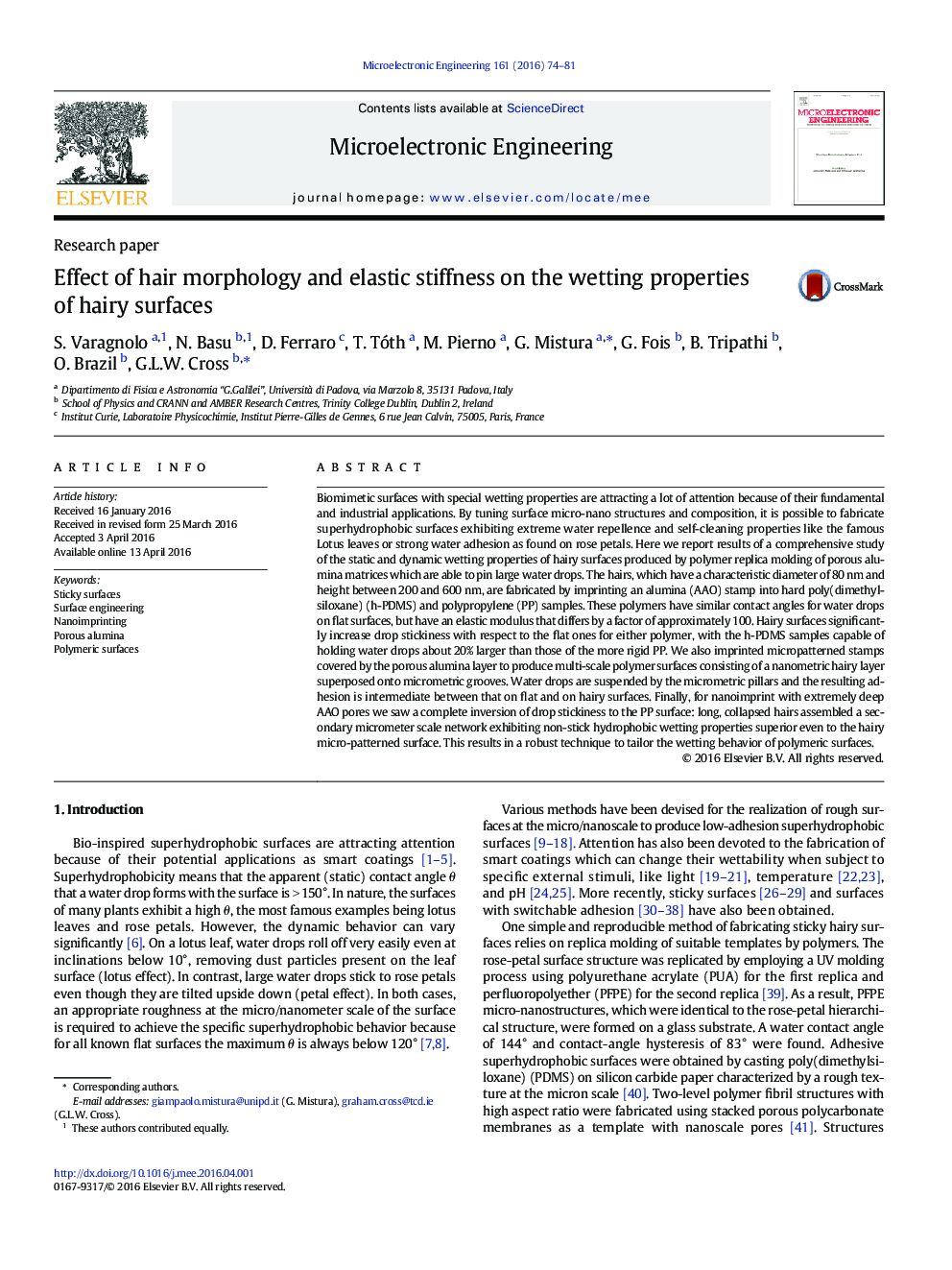| کد مقاله | کد نشریه | سال انتشار | مقاله انگلیسی | نسخه تمام متن |
|---|---|---|---|---|
| 538900 | 1450320 | 2016 | 8 صفحه PDF | دانلود رایگان |
• Hairy surfaces are fabricated by imprinting an alumina stamp into hard poly(dimethylsiloxane) and polypropylene samples.
• These polymers have similar water contact angles but elastic moduli that differ by a factor of approximately 100.
• Hairy surfaces significantly increase drop stickiness with respect to the flat ones for either polymer.
• Multi-scale polymer surfaces are fabricated by imprinting micropatterned stamps covered by the porous alumina layer.
• Water drops are suspended by micrometric pillars and adhesion is intermediate between that on flat and on hairy surfaces.
• This results in a robust technique to tailor the wetting behavior of polymeric surfaces.
Biomimetic surfaces with special wetting properties are attracting a lot of attention because of their fundamental and industrial applications. By tuning surface micro-nano structures and composition, it is possible to fabricate superhydrophobic surfaces exhibiting extreme water repellence and self-cleaning properties like the famous Lotus leaves or strong water adhesion as found on rose petals. Here we report results of a comprehensive study of the static and dynamic wetting properties of hairy surfaces produced by polymer replica molding of porous alumina matrices which are able to pin large water drops. The hairs, which have a characteristic diameter of 80 nm and height between 200 and 600 nm, are fabricated by imprinting an alumina (AAO) stamp into hard poly(dimethylsiloxane) (h-PDMS) and polypropylene (PP) samples. These polymers have similar contact angles for water drops on flat surfaces, but have an elastic modulus that differs by a factor of approximately 100. Hairy surfaces significantly increase drop stickiness with respect to the flat ones for either polymer, with the h-PDMS samples capable of holding water drops about 20% larger than those of the more rigid PP. We also imprinted micropatterned stamps covered by the porous alumina layer to produce multi-scale polymer surfaces consisting of a nanometric hairy layer superposed onto micrometric grooves. Water drops are suspended by the micrometric pillars and the resulting adhesion is intermediate between that on flat and on hairy surfaces. Finally, for nanoimprint with extremely deep AAO pores we saw a complete inversion of drop stickiness to the PP surface: long, collapsed hairs assembled a secondary micrometer scale network exhibiting non-stick hydrophobic wetting properties superior even to the hairy micro-patterned surface. This results in a robust technique to tailor the wetting behavior of polymeric surfaces.
Figure optionsDownload as PowerPoint slide
Journal: Microelectronic Engineering - Volume 161, 1 August 2016, Pages 74–81
